BMW 318i
vs
VW Jetta GLI
Is There Really An $8700 Difference?
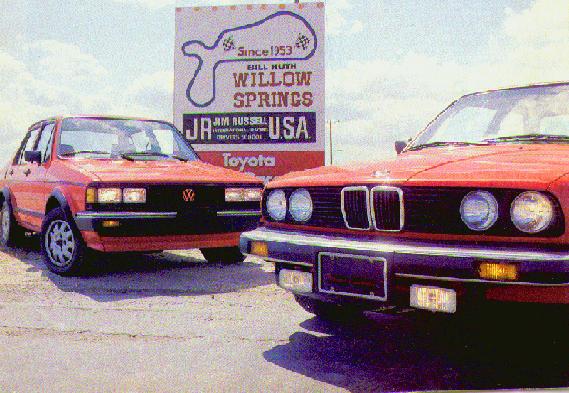

by C. Van Tune
photos by C. Van Dune & Stephanie Wolfe
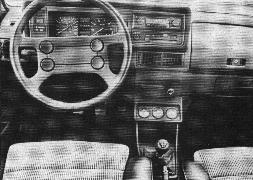
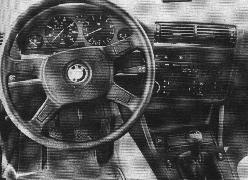 The Volkswagen Jetta GLI is one of the best bargains in the performance sedan market today. Priced down there with mere oatmeal-mobiles ($8690 base price), the five-passenger Jetta is a flat oustanding performer ... both in straight-line aceleration and through twisty chicanes.
The Volkswagen Jetta GLI is one of the best bargains in the performance sedan market today. Priced down there with mere oatmeal-mobiles ($8690 base price), the five-passenger Jetta is a flat oustanding performer ... both in straight-line aceleration and through twisty chicanes.
The secret behind the Jetta GLI's performance prowess is its close family ties to the Rabbit GTI. All the stuff that turned the lazy hare into a field runner also worls on the Jetta, and transforms the sedate sedan into a real driving machine.
The most important item is the high-output, 1.8-liter (1780cc) in-line Bosch K-Jetronic fuel-injected four-cylinder powerplant lifted from the GTI. Producing 90hp @ 5500 rpm and 100 ft-lbs of torque # 300 rpm, the willing little motor combines with the close-ratio five-speed (also from the GTI) to deliver some really outstanding acceleration figures. The car is very happy in virtually any driving situation, whether it be zipping through rush-hour traffic or pounding out the miles in a cross-country jaunt, although during the latter the relatively short (3.51:1) final drive ratio causes the motor to rev a bit high for optimum fuel economy.
 On the test track, however, it was the Jetta that impressed us. Although the BMW bettered its performance from 0-30 mph (3.0 sec. vs. 3.3 sec., due mostly to the Jetta's loss of traction), once the VW hooked-up it was all over for the 318i. Zero-to-sixty mph times for the Jetta of 9.1 seconds outshine the BMW's best of 10.0 seconds, while the quarter-mile test showd an outstanding 16.40 sec/81.10mph pass for the Jetta as compared to the Bimmer's good-but-not-great 17.12 sec/79.36 mph pass.
On the test track, however, it was the Jetta that impressed us. Although the BMW bettered its performance from 0-30 mph (3.0 sec. vs. 3.3 sec., due mostly to the Jetta's loss of traction), once the VW hooked-up it was all over for the 318i. Zero-to-sixty mph times for the Jetta of 9.1 seconds outshine the BMW's best of 10.0 seconds, while the quarter-mile test showd an outstanding 16.40 sec/81.10mph pass for the Jetta as compared to the Bimmer's good-but-not-great 17.12 sec/79.36 mph pass.

The difference in gearing is very apparent in quartermile-testin, with the BMW going through the traps at 5900 rpm in third gear while the Jetta is hitting 6000 rpm in fourth. Ironically, tip speed for the pair is not that far apart, with the Jetta ending at 106 mph while the BMW tops out at 109 mph.
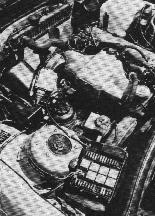
Fuel economy is quite good with both vehicles, although the 318i came out on top with a 28.9 mpg test averate over the Jetta's 27.7 mpg showing. Both cars will far outdistance those figures during open-road cruising, returning 33-35 mpg with ease.
In the handling department, however, the cars are as different as understeer and oversteer...as that's exactly what they tend to do.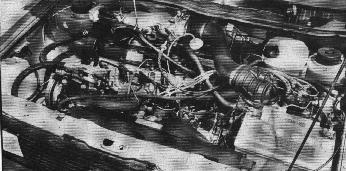
The Jetta is as easy to drive through the turns as one can ask from a front-drive automobile, exhibiting moderate throttle-on understeer and a fair amount of body roll; however, both are very controllable and easy to make work.
The BMW on the other hand, dives through corners much like a rear-engined Porsche ... requiring judicious use of throttle and brakes to keep from seeing the wrong side of the guardrail. Once mastered, corners can be taken with great aplomb (and certainly at as high of speeds as with the Jetta> but all of the braking must be accomplished before the apex. Then it's "stand on the throttle and steer it through". This method is a lot of fun, although requires a warrior's bravado to safely make it through closing radius twisties (left-foot braking seems to help).
On the skidpad the Jetta will body-roll to a point, then lift the inside-rear wheel off the ground. This trait (common to front-drive VWs) looks somewhat unstable, but actually feels fine from the driver's seat. The BMW, meanwhile, generates much less body roll but doesn't feel as stable from behind the wheel. Ironically, the vehicles were very close in ultimate lateral acceleration, the BMW taking the edge with 0.78G to the Jetta's 0.76G showing. Steering inputs from both cars (rack and pinion) are very good, allowing the driver a fairly precise notion of what's going on up front.
It should be noted that due to the tremendous demand for Jetta GLI's, wome cars are beind delivered without the GTI's wheel/tire combination mentioned above. Our test car was one such vehicle (oufitted instead with skinny 175-70x13 Michelins mounted on 13x5.5 wheels) which is a fact that should be taken into consideration when reviewing the skidpad data.
While interior fit and finish is outstanding on both cars, the lesser-priced Jetta actually exudes a greater feeling of luxury than does the BMW. More comforable and richer appearing seating areas greet the Jetta passenger, as opposed to the hard, stark, almost antiseptic look of the Bimmer's seats. Certainly well-designed for long-term comfort, the BMW's seats are still decidedly lacking in some of the "posh" that should go along with a car in its price range. Both cars' front buckets sit to high for our tastes, however the Jetta's units feature far better side bolstering support.
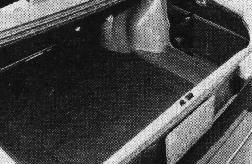

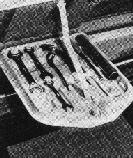
|
Starting at a base price of $16,430, our test BMW had been outfitted with a fair amount of optional equipment, including AM/VM/cassette stereo ($505), dual-position manual sunroof ($520), Luxux Package ($720 -- which includes cruise conrol, power windows, and central locking system) and limited slip differential ($370)...for total price of $18,595.
The VW Jetta GLI bases at a very reasonable $8690, our test car having been ordered with manual sunroof ($315), air conditioning ($700) and Blaupunkt Frankfurt 2-speaker AM/FM radio ($185)...for a total price of $9890.
Quite a difference in price for two such similar cars. However, like the pastries at Jacques, value is often a subjective decision...and for many people the BMW will represent the best vehicle. For those to whom nameplate status is paramount there's no choice but the Bimmer. But for those who are able to look past the demure "VW" grille emblem, there's a marvelous performance sedan with no peer. -VWP